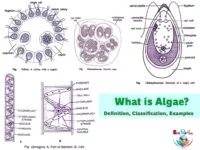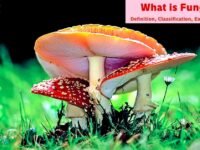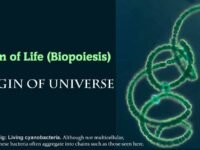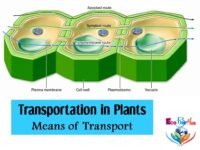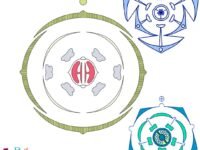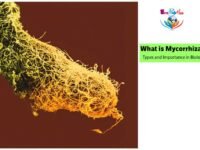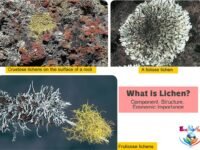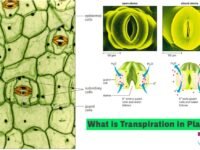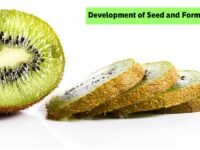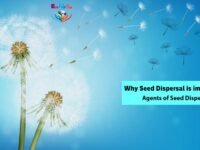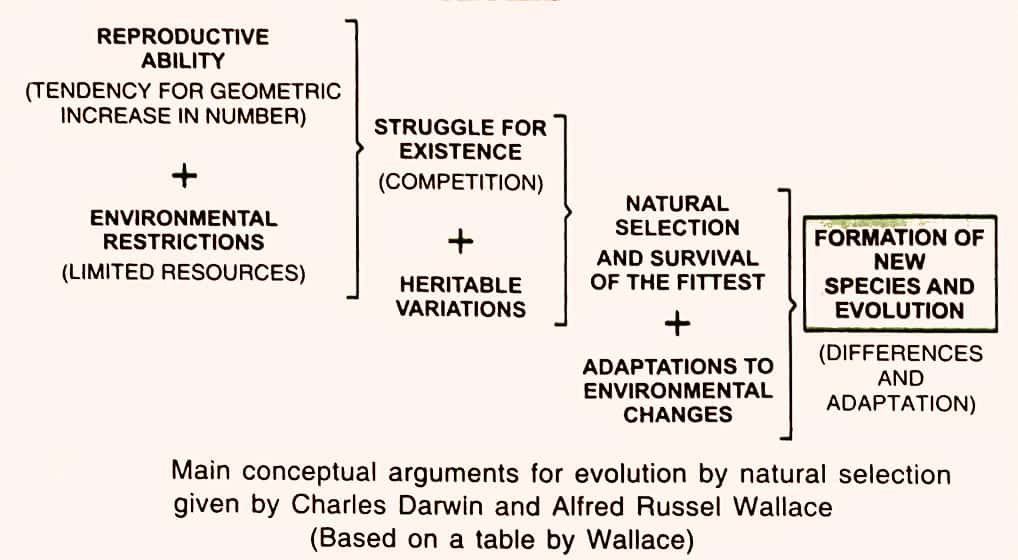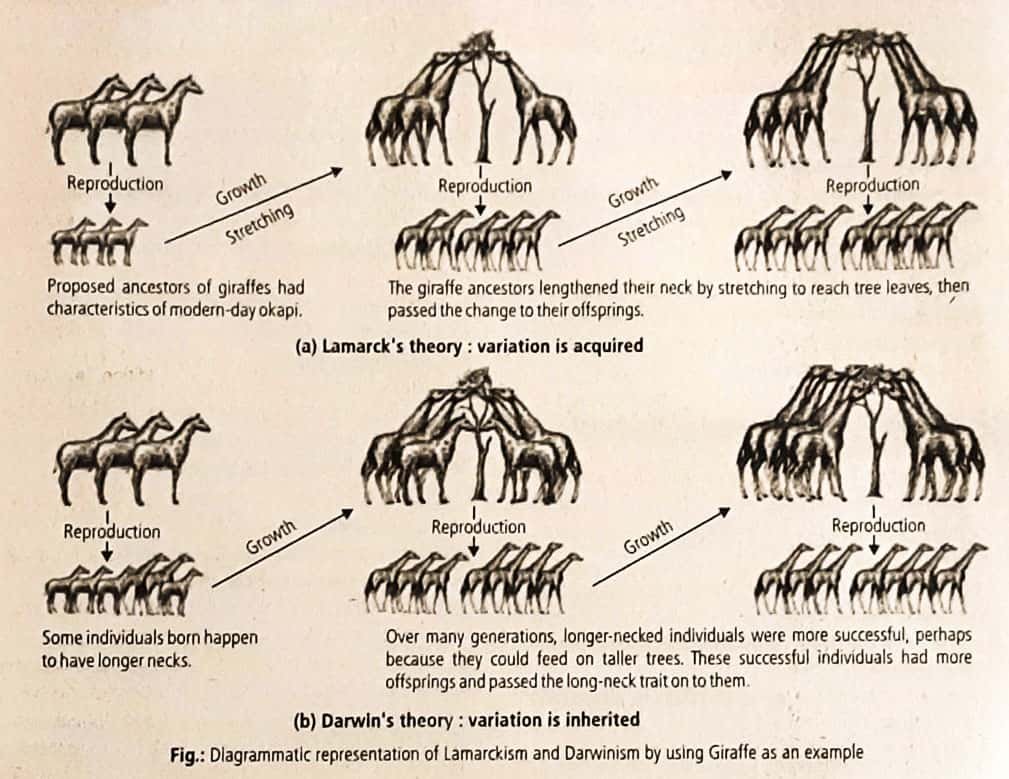In this tutorial, we have discussed the 04 kinds of theory of Evolution in detail.
TABLE OF CONTENTS
THEORY OF EVOLUTION
● The similarities among living organisms indicate that all of them have evolved from some single common ancestor.
● Evolution definition: Through the process of gradual modifications, adaptations, and natural selection, over a million and a half different species have evolved from a common ancestral form. This process is called evolution or organic evolution. This is described as ‘descent with modification‘.
● From time to time, a number of hypotheses have been put forward to explain the mechanism of evolution by which a formation large number of species of animals and plants emerged on Earth. However, most of these lacked scientific explanations and hence were discarded.
● Various theories regarding evolution (origin of species) have been postulated by different evolutionists. The most important ones are:
(01) Lamarck’s Theory of Inheritance of Acquired Characters (Lamarckism).
(02) Darwin’s Theory of Natural Selection (Darwinism).
(03) DeVries’ Theory of Mutations (Mutations).
(04) Modern Concept of Evolution (Synthetic Theory).
(Theory of Inheritance of Acquired Characters)(01) LAMARCKISM
● Jean Baptiste de Lamarck (1774 – 1829), a French biologist, is well known for his concept, ‘Inheritance of Acquired Characters in Organisms’ for the formation of new species, which he explained in his book Philosophie Zoologique in 1809.
● Definition: According to the theory of inheritance of acquired characters, the changes in the structure or function of any organ acquired during the lifetime of an individual in response to changes in the surrounding environment are inherited by offspring and keep on adding over a period of time. These changes led to the origin of new species.
Postulates of Lamarckism
Lamarckism is based on three factors or postulates:
1. New Needs: Changes in the environment, create new needs in living organisms so that they are better adapted to the changing environment. The organisms have to put in special efforts for the fulfillment of the new needs. These efforts lead to a change in habits or behaviour. The new need results in the formulation of a new organ or a part in the body. If the need continues that organ or part continues to develop.
2. Acquisition of New Characters: New characters are acquired by living beings in two ways:
(a) By Use and Disuse: The new habits involve greater use of certain organs to meet the new needs, and disuse or lesser use of certain other organs in changed conditions. The continuous use of an organ or organs keeps them functional and makes them stronger, larger, and more efficient. Continuous disuse of an organ or organs leads to a gradual reduction in their size and to their final disappearance.
Vestigial organs in the present or modern forms are examples of such non-functional organs. They were functional in the ancestors. Thus, by differential use and disuse, an organism would acquire some characters and modify some others. The changes acquired or accumulated in an organism during its lifetime by the use and disuse of organs or by the influence of the environment are called acquired characters.
(b) Effect of Environment: Changes in temperature, light, medium, food, etc., influence the functioning and behaviour of living beings and introduce changes in their structure. Thus, organisms acquire certain new characters due to the direct or indirect influence of the environment.
3. Inheritance of Acquired Characters: The characters acquired by an organism during its lifetime are inherited to the next generation. In every generation, some new characters were acquired or the older ones keep on increasing or improving. As a result, after a number of generations, the species gets modified into a new one.
Evidences in Support of Lamarckism
1. Evolution of Long Neck in Giraffe: According to Lamarck, Giraffes have evolved from deer-like ancestors and they had short necks and forelimbs and grazed on grass. As the climate of this area gradually became arid, grasslands changed into desert, and vegetation was replaced by a few high trees. The leaves of these high trees were the only food available to the ancestors of the Giraffe. For obtaining their food from the tall trees, they had to continuously stretch their neck and forelegs. The continuous stretching of the neck to reach the tree leaves results in a gradual elongation of the neck and forelimbs. Whatever they acquired in one generation was transmitted to the next generation, in which further elongation occurred due to similar efforts. This in due course of time resulted in the long neck of the Giraffe.
2. Evolution of Snakes: According to Lamarck, the ancestors of snakes were limbed and lizard-like. They lived in thick jungles. Out of fear of mammals, who were more powerful, the ancestors of snakes started creeping on the jungle floor and living in narrow crevices or burrows. For creeping or burrowing they stretched their body, which gradually became elongated. The legs, which were of no use but proved to be a hindrance in creeping and burrowing, gradually disappeared.
3. Evolution of Aquatic Birds: Aquatic birds like ducks, swans, and geese, etc. have arisen from terrestrial ancestors by:
(a) Developing web between the toes for wading in the water (adaptation to an aquatic mode of life-Continuous use). Web developed because the ancestral forms had to spread their toes and stretch the skin between them to rest on water.
(b) Reduction in the size of wings due to their continuous disuse.
4. Evolution of Feet of Modern Horse and Deer: They have developed the power of fast running through continuous efforts to escape from enemies. Therefore, lengthening of limbs and of middle toe in fore and hind limbs has taken place.
Criticism of Lamarckism
Lamarckian theory (Lamarckism) was exposed to severe criticism and Lamarck had to defend it throughout his life. It failed to meet the tests of observations.
1. The tendency to increase in size has been noted in many forms, but many times evolution shows reduction in size. For example, in Angiosperms, the trees are primitive and shurbs, herbs and grasses have evolved later and are more advanced. Persons constantly busy in reading and writing and using their eyes more than others, often develop impaired sight.
2. The new organs develop where the organisms feel their need is also not true. If the development of a new organ or structure depends upon the desire why man who has long desired to fly like birds has not developed the wings.
3. The reaction of the environment may have some weightage. Organisms do react to the environment but the environment causes temporary changes in their organisation and these changes cannot be inherited to the offspring. Similarly, it could not be understood that how the use or disuse of an organ will produce a change in its size and how this change will be inherited to the offspring.
4. Experiments have discarded the law of Inheritance of Acquired Characteristics. For example, if any of the parents become blind or deaf or lame before producing the offspring, they do not produce blind, deaf, or lame offspring. Mutilations and wounds of the parents do not appear in the offspring. Small feet in Chinese women, piercing of nose and ears in Indian women yet these have no hereditary effect. The strong muscles of a wrestler are not inherited by his children.
6. Pavlov, a Russian physiologist, trained mice to come to food on hearing the bell. But the training was not inherited.
7. Theory of germplasm
‘Theory of Continuity of Germplasm‘ proposed by August Weismann (1892) and Mendel’s Laws of Inheritance were hard blow to Lamarck’s Theory of Inheritance of Acquired Characters Lamarckism and pangenesis theory of Darwin.
He cut off the tails of white mice for about 80 generations, but tailless offspring were never born. Hence, he believed that the acquired character was not inherited.
August Weismann proposed the theory of germplasm, or germinal selection. According to germplasm theory, each organism has two types of cells:
(a) Germ cells, which pass on their hereditary material to the next generation and are found in gonads.
(b) Somatic cells, which form the body and don’t pass their hereditary material to offspring.
The environment and use and disuse of organs affect somatic cells only. This means acquired characters are restricted to somatic cells alone and do not influence germ cells. As such these cannot be inherited. Lamarck’s Theory of Evolution is now considered an erroneous assumption.
Neo-Lamarckism
A group of scientists had further studied Lamarck’s theory and had supported its modified form, which is known as Neo-Lamarckism. A few of the Neo-Lamarckians are T.H. Morgan, Spencer, Cope, Richard, Wells, Lawrence, Naegeli, Gadow, Dali, McDougall, etc. They suggested that if not all, some of the acquired characters are inherited to some extent.
● Neo-Lamarckism states that:
➢ Germ cells are influenced by environmental changes.
➢ Germ cells may carry acquired or somatic variations to the offspring (Harrison’s experiment).
➢ Germ cells may be affected directly by environmental factors (Tower’s experiment).
➢ Somatic characters are the result of interaction between genes and the environment. It means the environment does affect gene expression.
● Evidences in support of Neo-Lamarckism:
➢ In certain cases, somatic cells can produce a new organism, which is against Weismann’s theory of continuity of germplasm. This occurs in vegetative propagation in plants and regeneration in animals
➢ Tower exposed the young developing potato beetles to extremes of temperature and humidity at the time of the development of their reproductive organs. This did not produce any change in the beetles themselves. The offsprings, however, had colour variations, which were passed on to the succeeding generations. Tower’s observations indicate a direct effect of the environment on germ cells.
➢ Muller demonstrated the role of X-rays in producing heritable variations in Drosophila by changes in the chromosome structure.
➢ C. Auerback in collaboration with Robinson and Carr produced heritable changes in Drosophila by using certain chemical mutagen like mustard gas.
➢ The white mice which were reared at a high temperature (20°-30°C), were found to develop a longer body, a long tail, and longer hindlimbs. This character was found to be transmitted to the offsprings, generation after generation.
(Theory of Natural Selection)(02) DARWINISM
● Darwinism is the term coined for the explanation presented by Charles Darwin (1899–1882) for the origin of species by Natural Selection. It was explained by Darwin in his book ‘The Origin of Species by Natural Selection‘.
● An English biologist, Alfred Russel Wallace (1823-1913) also arrived at the same conclusion independently. Theory of Natural Selection was announced on June 30th, 1858 by Charles Darwin and Alfred Russel Wallace jointly.
Darwin’s Observations
In 1831, Darwin travelled as a naturalist around the world on a survey ship, named H.M.S. Beagle. The voyage lasted for 5 years (1831–1836). During his voyage, Darwin visited South America, Australia, South-East Asia, the southern tip of Africa, and a number of islands including the Galapagos Islands. During his voyage, Darwin collected their flora and fauna and made careful observations about the similarities and differences among them. He described his observations in his book Naturalist Voyage Around the World.
Darwin was much influenced by three publications namely:
➢ Darwin read a paper titled “On the Principles of Populations” by T.R. Malthus, 1798. In this article, Malthus had proposed that living organisms (populations) multiply in geometric ratio, whereas the space and food resources, etc. remain constant.
➢ The book was written by Sir Charles Lyell entitled “Principles of Geology” which explained gradualism (the earth has changed slowly and gradually through ages) and uniformitarianism (fundamental laws operate today on the earth in the same way as they did in the past), and
➢ The paper titled “The tendency of varieties to depart from original types” was sent to him by Alfred Russel Wallace.
Darwin described Galapagos Islands as Nature’s living laboratory of evolution, and conceived the idea of natural selection. Galapagos Islands are a chain of 14 islands in the Pacific Ocean near the Equator. They are situated on the west coast of South America. Their fauna and flora resemble those of the South America mainland because these islands were once connected with the mainland. After their separation, the fauna and flora of these islands evolved independently. The present flora and fauna on each island are much different from those on the mainland and also from other islands.
● Darwin’s observations were:
1. Different islands, which are widely separated but have similar climates and topography, have different flora and fauna.
2. The plants and animals living on nearby islands are related but differ amongst themselves and also from those found on the mainland.
3. The same groups of animals and plants from different areas also exhibit differences.
4. The flora and fauna of the Galapagos Islands in the Pacific Ocean on the west coast of South America, Darwin identified 13 species of finches, each species occupying a different island. They differed from each other as well as from the finches present on the mainland of South America, from which they all are supposed to have evolved. These birds are popularly known as Darwin’s finches. This divergence in population due to adaptations is known as adaptive radiation.
5. Darwin collected fossils and noticed that while some fossils resembled modern day plants and animals, others were much different and primitive.
Basic Postulates of Darwinism
1. Overproduction or Rapid Multiplication
All living beings have an inherent tendency to produce offspring of their own kind in large numbers for the perpetuation of their race. This is called prodigality. The number of offspring produced is much more than can be supported by a particular environment and that can possibly survive, i.e., all living organisms have a tendency for geometric increase. For example,
1. Bacteria multiply after every 20 minutes. Within 24 hours, a single bacterium will produce 4.7 x 1027 bacteria weighing about 2,000 tonnes.
2. Paramecium divides three times in 48 hours. If all its offspring survive and multiply, in five years, the mass of paramecia will be equal to ten thousand times the mass of the earth.
3. Codfish produces over a million eggs in a year. If all the eggs develop into fishes, the whole Atlantic Ocean will be full of cods in five years.
4. Osyter lays 60-80 million eggs in a single spawn. If all the eggs hatch and young ones survive, after five generations, there would be more oysters than the estimated number of electrons in the visible universe and oyster mass will become 8 times the volume of the earth.
5. Elephant is the slowest breeder. It starts breeding at the age of 30 years and during its lifetime of 70 years, it produces only six offspring. If all the young ones survive, a single pair of elephants would produce nineteen million elephants at the end of 750 years.
2. Limited Space and Food
Space in the universe is constant. The ultimate source of food for plants and animals also remains constant. Therefore, the carrying capacity of the environment does not allow the population to grow indefinitely. In spite of the enormous reproductive potential of living beings, under natural conditions, the number of individuals of each species remains nearly constant over a long period of time.
3. Struggle for Existence
According to Darwin, the resources like space, air, food, water, minerals and light on the earth are limited but the number of organisms increases many folds due to overproduction. There is an intense competition and three-fold struggle for existence amongst the organisms for obtaining optimum resources. The struggle is intraspecific, interspecific and with the environment. Darwin called it struggle for existence.
➢ Intraspecific or Intranecine Struggle: This is competition amongst the individuals of the same species. It is the toughest form of struggle as the needs of the individuals of same species are identical. Territoriality, preference for mate, etc., are examples of intraspecific struggle. Cannibalism is extreme case of intraspecific struggle.
➢ Interspecific or Internecine Struggle: This is the struggle between the members of different species. Predator-prey interaction is an example of interspecific struggle. This competition is for food and other needs. Usually the smaller animals are more affected by this than the larger ones.
➢ Struggle with the Environment: Living organisms struggle with adverse environmental conditions like floods, cold waves, heat waves, earthquakes, storms, etc. It sometimes eliminates a large number of individuals in a population. Dinosaurs are believed to have disappeared due to such environmental catastrophes.
4. Variations
● The offspring are similar to their parents and also exhibit some resemblance to each other. But they are not identical. They differ to some extent in shape, size, colour and behaviour, etc. It means variation is the law of nature. No two individuals are identical except identical or monozygotic twins. Even they also exhibit some differences. Variations are non-directional.
● Variations exist in all organisms. These variations may be useful or harmful or useless. Harmful variations make the organism unfit in the struggle for existence.
● The variations may be favoured or unfavoured by the nature. Beneficial variations are favoured by the nature.
● Useful variations are quite significant and make the organism fit in the struggle for existence.
● Such variations are inherited by the progeny, so that the progeny has better chances of survival.
5. Natural Selection and Survival of the Fittest
● According to Darwin during the struggle for existence, the organisms with beneficial variations alone will survive.
● Darwin hypothesised that these variations are sorted out by nature through competition.
● The organisms which are selected by nature are said to be the fittest. This idea of survival of the fittest was proposed by Herbert Spencer.
● Variations that are useful to the individual in a particular environment would increase that individual’s ability to reproduce and leave fertile offspring. These are favoured by nature.
● Less favourable variations would be at a disadvantage and organisms possessing them are reproductively less successful. Differential reproductive success exists among organisms.
● The organism that fails to reproduce cannot be represented in future generations, no matter how fit it may be in the struggle for existence.
For example,
1. In a herd of herbivores, only weak or unable to flee fast or which are less alert are attacked by predators.
2. In deserts, plants that are able to avoid loss of water by transpiration or which have long roots to absorb water from deeper layers survive the drought period.
3. Only those animals are able to survive and live in very cold regions of Tundra which have thick fur to retain body heat.
This sorting out of individuals with useful variations was called natural selection by Darwin and survival of the fittest by Wallace. Individuals with favourable variations survive, reach adulthood and reproduce offspring, others fail to do so. This is called differential reproduction. Darwin has called this differential reproduction as natural selection.
Example: Evolution of long neck in Giraffe
Darwin explained the evolution of the long neck of the modern giraffe by presuming the existence of variability in the length of neck and legs in the ancestral population of giraffe. The longer-necked giraffes with longer forelegs were more successful in reaching the soft leaves of trees for feeding. Therefore, natural selection favoured longer-necked progeny generation after generation. The selection of longer necks for innumerable generations resulted in the evolution of present day longer-necked modern Giraffe.
6. Inheritance of Useful Variations
Individuals which survive the struggle for existence transmit their useful variations to the offspring, which will also prove to be fit. Thus, offsprings of the selected individuals are born fit to the environment.
7. Origin of Species (Formation of New Species)
● According to Darwin, new variations appear in every generation and supplement the favourable variations inherited from parents. Thus, variations keep on accumulating, natural selection continues, and after a number of generations, the offspring become markedly different forming a new species. The origin of new species by gradual modification of older ones is called speciation and they become markedly distinct from their ancestors.
● Furthermore, certain members of a population with one group of variations may become adapted to environmental changes in one way, while others with a different set of variations may become adapted in a different way. As a result, two or more species may arise from a single ancestral species.
Evidences in Support of Darwinism
➢ Competition of struggle for existence is seen in all organisms.
➢ Artificial Selection: There is a close parallelism between natural selection and artificial selection. By controlled breeding and natural selection for several generations, many new varieties of plants and new species, races or breeds of domestic animals have been developed. New races of dogs, horses, pigeons, poultry, sheep, pigs, goats, etc., have been developed by man by artificial selection. If a man can produce new varieties in a short time, nature with more time and vast resources can easily produce new species by selection.
➢ Mimicry and Protective Colouration: Mimicry and protective colouration as seen in certain animals can be achieved only by gradual changes occurring side by side both in the model and mimic occupying the same area.
➢ Correlation between Position of Nectaries in Flowers and Length of Proboscis of Pollinating Insects: This relation between two different organisms can evolve gradually and can be explained by natural selection.
➢ Extinct Forms: Study of fossils shows that new organisms are formed regularly and the older ones become extinct from time to time. The resemblance of fossils to the present day living forms is indicative of their gradual modification.
Drawbacks of Darwinism
➢ Theory of Pangenesis: Darwin failed to explain the mechanism of inheritance or mode of transmission of variations to the next generation. In 1868, Darwin proposed the theory of pangenesis to explain this phenomenon. According to this theory, every cell or organ or part of the body produces minute hereditary particles, called pangenes or gemmules. These were carried by the blood and deposited in the gametes. However, according to Germplasm Theory of Weisman, germplasm gets differentiated from the somatoplasm early in the embryonic development ruling out any influence of somatic changes on germ cells.
➢ Heritable and Nonheritable variations: Natural selection stresses upon the small fluctuating variations, but these are mostly nonheritable. Thus, Darwin did not distinguish between heritable and nonheritable variations. He also did not distinguish between somatic and germinal variations.
➢ Inheritance of Small Variations: Natural selection does not account for how an organ can be successful in its initial stages of formation. These stages of formation do not have the selection value, unless the organs are perfected over the course of time. For example, wing of a bird in its initial stage as a small structure would have been of no use to the ancestors of birds. How and why such a structure was favoured by selection and inherited to subsequent generations with gradual increase?
➢ Existence of Vestigial Organs: According to natural selection, only useful organs are selected and favoured in the struggle for existence. The existence of vestigial organs cannot be explained because these are of no use to the possessor.
➢ Overspecialisation: Overspecialisation of some organs in certain animals like antlers of deer and tusks of elephants beyond the stage of usefulness rather causing hindrance in daily life cannot be explained by natural selection.
➢ Darwinism had explained the survival of the fittest, but did not explain the arrival of the fittest.
➢ Darwinism could not explain the mechanism of occurrence of variations and their inheritance.
➢ Darwin did not consider the importance of microvariations in evolution. He called them as sports of nature.
➢ If the new species are formed due to the cumulative effect of fluctuating variations in the generations, transitional forms might be available. However, such forms were not found in most cases.
Table 1: Differences between Lamarckism and Darwinism
Sl. No.
Lamarckism
Darwinism
01.
This theory states that there is an internal vital force in all organisms.
it does not believe in the internal vital force.
02.
Lamarckism considers new needs or desires to produce new structures and change the habits of the organisms.
They do not form part of Darwin’s natural selection theory.
03.
According to this theory, if an organ is constantly used, it would be better developed whereas disuse of organ results in its degeneration.
An organ can develop further or degenerate only due to continuous variations.
04.
It does not consider the struggle for existence.
Struggle for existence is very important in this theory.
05.
All the acquired characters are inherited to the next generation.
Only useful variations are transferred to the next generation.
06.
Lamarckism does not believe in survival of the fittest.
Darwin’s natural selection theory is based on the survival of the fittest.
(03) MUTATION THEORY OF EVOLUTION
Mutation theory for the origin of new species was proposed by Hugo DeVries (1901). According to mutation theory, new species arise from the pre-existing ones in a single generation by the sudden appearance of distinct and discontinuous heritable changes. DeVries called such sudden distinct heritable changes as mutations (Latin mutare = to change). Darwin called them sports and Bateson named them saltations or saltatory (discontinuous) variations.
Hugo DeVries was a Dutch botanist, professor and director of Botanical Garden, Amsterdam, Netherlands. He was one of the three scientists who discovered Mendel’s laws in 1900.
Hugo De Vries observed the sudden appearance of seven new varieties of Evening Primrose (Oenothera lamarckiana) which grew wild near his garden.
01. Oenothera gigas: The giant form with large leaves and flowers.
02. O. rubrinervis: The plants with red-veined flowers and fruits.
03. O. nannella: The dwarf variety, most attractive.
04. O. laevifolia: Plants with smooth, narrow and slender leaves.
05. O. brevistylis: With very short style and rounded leaves.
06. O. oblonga: With oblong leaves.
07. O. albida: Plants pale-white without chlorophyll.
Salient Features of Mutation Theory
On the basis of the above observations, Hugo De Vries (1901) put forward the Mutation Theory of Evolution. The main postulates of mutation theory are:
01. Mutations are sudden, large and distinct discontinuous heritable changes. As Mutations are discontinuous, not cumulated in generations.
02. All organisms have an inherent tendency to change or mutate.
03. Individuals showing mutations are called mutants. Mutants are markedly different from parents.
04. Mutations always appear full-fledged. So, there are no intermediate stages in the development of a character or organ.
05. Different mutations may appear in different members of the same population or same species giving rise to several related new species.
06. Mutations are indeterminate, i.e., they appear in all directions and may be useful or harmful.
07. Mutations are subjected to natural selection. Beneficial mutations are selected and favoured by nature and harmful or lethal mutations are eliminated by the death of mutants.
08. Mutations may appear again and again (i.e., may occur) generation after generation. Thus, they provide more and more chances of selection by nature.
09. Mutations are large and distinct. They are different from minor, fluctuating directional variations, which according to Darwin produce new species.
10. Evolution by mutations is discontinuous and a jerky process.
11. Mutation theory can explain the occurrence of vestigial and even overspecialised organs.
12. Though rare, mutations are of common occurrence.
Evidences in Support of Mutation Theory
Several mutant forms were observed after DeVries, the discovery of mutations. Some examples are:
01. Appearance of a short-legged Ancon sheep from а normal long-legged parents in 1871.
02. Appearance of hornless Hereford cattle from normal horned parents in 1889 in a single generation.
03. Birth of hairless cats, dogs and mice from normal parents.
04. Formation of seedless variety of banana.
05. Oenothera lamarckiana has 14 chromosomes, and the mutants produced from it have 16, 20, 22, 24, 28, and 30 chromosomes. This shows that the mutants are independent species.
06. Mutations have a genetic basis and are, therefore, inheritable.
Objections Against Mutation Theory (Criticism)
Davis, Gates and Morgan raised following objections against mutation theory:
01. Mutation theory cannot explain the phenomenon of mimicry (the resemblance between mimic and model), protective colouration and the relationship between the position of nectaries in the flowers and the length of the proboscis of insects that pollinate these flowers. This is called coevolution.
02. Most mutations are deleterious, harmful or lethal, whereas evolution is based on the usefulness of the mutant characters.
03. Mutation rate is very low. It is one per million or one per several million gene loci. How can mutations help in evolution at such a slow pace?
04. Oenothera lamarckiana was not the normal homozygous plant. It was a hybrid. Hence, the results obtained by DeVries were random and not true.
05. Most mutations are recessive and hence are not expressed. Their utility for the progeny cannot be determined.
06. Mutations do not provide sufficient opportunity for all specialised adaptations.
07. Mutations cannot explain the presence of flightless birds on oceanic islands.
Modern Theory of Mutations
According to modern theory:
1. Mutations are universal and occur in all organisms.
2. Mutations occur in all types of cells. The somatic mutations that occur in the body cells are nonheritable.
3. Mutations that occur in the germ cells are heritable.
4. Only heritable mutations help in evolution.
5. The various agents (chemicals and radiations) that introduce mutations are called mutagens.
6. Mutations can be neutral, harmless, harmful or beneficial.
7. Mutations are often recessive, but may even be dominant. Therefore, recessive mutations are more numerous.
8. Mutations are of various magnitudes.
9. Mutations form the raw material for evolution. But alone, they cannot produce new species.
Significance of DeVries Mutation Theory
Mutations are important for evolution. They introduce variations or differences in the organisms of a population which can be selected by natural selection. Therefore, they provide the necessary raw materials, the substrates, on which natural selection can operate.
(Modern Synthetic Theory of Evolution)(04) NEODARWINISM
● The present concept of evolution is a modified form of Darwin’s theory of natural selection and is often called NeoDarwinism. According to it, only genetic variations (mutations) are inherited and not all variations as held by Darwin.
● Thus, the modern concept of evolution is a mix of Darwin’s and Hugo de Vries’ theories. This is also called the synthetic theory of evolution. It is the most accepted theory in modern times.
● The basis of this theory was provided by Dobzhansky in his book ‘Genetics and Origin of Species’ while the designation ‘Synthesic Theory’ was proposed by Huxley.
● Many other scientists like Muller, Fisher, Wright, Mayr, etc. have contributed a lot but the final shape of ‘Modern Synthetic Theory of Evolution” wasio given by Stebbins.
● NeoDarwinism or modern concept of evolution was elaborated by Huxley (1942), Dobzhansky (1937), Muller (1949), Fisher (1958), Wright (1968), Mayr (1963 and 70) and Stebbins (1966-76) in the light of recent knowledge acquired in the field of Cell Biology and Molecular Biology and Genetics. But the final shape of ‘Modern Synthetic Theory of Evolution” was given by Stebbins in his book ‘Process of Organic Evolution’.
● According to this concept, genetic variabilities or variations in the gene pool of population and natural selection are two main elemental forces of evolution. Variations are introduced by mutations, recombinations, changes in the structure and number of chromosomes, hybridisation, and migration. Adaptations are the outcome of the interaction of these forces and isolation is a physical force that assists in the accumulation of variations in a group of individuals of a population or in different populations of a species.
● According to synthetic theory there are five basic factors involved in the process of organic evolution.
I. Genetic variations:
Evolution of species occurs through the accumulation of genetic variations in the gene pool of the population over a long period of time. Variations occur in many ways —
(i) Mutation
Gene mutation is the permanent random alteration of the nucleotide sequence of a gene. Gene pool is the sum total of all the different genes and their alleles present in a population. Variations occur in the gene pool due to the change of gene frequency by mutation.
Mutation is the major source of genetic variation. It alters the base sequence in a gene or gene sequence in a chromosome.
(a) Gene mutation: The heritable characters of an individual depend on the genes which control them. Any structural change occurring in the chemistry of DNA molecules is called gene mutation.
Gene mutation is a random change in the base sequence of a gene. It occurs by substitution, addition or deletion of one or more bases. This ultimately affects the allele’s frequency in the population. The mutated gene may give rise to a new protein or may fail to produce any. This may change the phenotype (trait).
(b) Chromosomal aberrations: Morphology of chromosomes changes at times, and such a variation may manifest in the phenotype. Morphological changes occur by deletion, inversion, translocation and duplication of a segment of a chromosome.
(c) Numerical changes: Numerical changes take place by aneuploidy, i.e., addition or deletion of one or two individual chromosomes (2n + 1, 2n + 2, 2n – 1, 2n – 2), or by polyploidy, i.e., the addition of one or more complete set of chromosomes, producing triploid (3n), tetraploid (4n) and polyploid (∞n) individuals. The chromosomal aberrations result in loss of genes, new positions of genes or addition of genes.
(ii) Genetic recombination
Genetic recombination occurs in sexually reproducing organisms at every reproduction. It occurs due to the dual parentage, independent assortment of chromosomes, crossing over during meiosis, random fusion of gametes and formation of new alleles.
That is why the offsprings of the same parent are different as they have different combinations of parental genes. Variation is also brought about when gametes are formed after meiosis.
(iii) Gene flow (Gene migration)
If the migrating individuals interbreed with the members of the local population, these may bring many new alleles into the local gene pool of the host population. This is called gene flow or gene migration. If the inter-specific hybrids are fertile, then these may initiate a new trend in evolution which lead to the formation of new species.
Gene flow is when there is a chance for the mixing of genes of closely related species through sexual reproduction.
(iv) Hybridization
Migration of individuals from one population to another results in the introduction of a new gene into the gene pool.
Hybridization is the crossing of organisms that are genetically different in one or more traits (characters). It helps in intermingling of genes of different groups of the same variety, species and sometimes different species.
Thus, hybridization may occur between two closely related species giving rise to a progeny with altered characteristics than those of the parental population.
(v) Genetic drift
The theory of genetic drift was developed by geneticist Sewall Wright in 1930 and hence, also called Sewall Wright Effect.
The term genetic drift refers to the elimination of the genes of certain traits when a section of the population migrates or dies of natural calamity. It alters the gene frequency of the remaining population. Hence, genetic drift is a mechanism of evolution that acts in concert with natural selection to change species characteristics over time.
Genetic drift occurs in small populations when it breaks off from a large population. Only representative genes of the large population are present which undergo change and the small population may evolve as a result.
In such populations, individuals rapidly become homozygous. This may lead to the extinction of the species. But as competition is less in such populations, the homozygous individuals may withstand the conditions and survive well, finally giving rise to new species.
It is characterized by the following features:
– Genetic drift is an evolutionary force operating in small populations.
– Gene frequency in small populations changes by chance.
– In small populations, some genes may be lost or reduced and others may be increased by sheer chance irrespective of their selective advantage or disadvantage.
– By genetic drift, a new mutation arising in a small population may either be fixed or lost irrespective of its adaptive value.
Two important examples of genetic drift are the bottleneck effect and the founder effect.
(i) Bottleneck effect
The yearly or seasonal cycle phenomenon of decrease or increase in size of a population causing periodic squeezing of some of the genes in gene pool is called bottleneck effect. The term was used by Stebbins.
For example, among houseflies in Northern India, only a few representatives survive the winter months. These give rise to the summer population. The upcoming generations will represent the gene pool of those few flies that survived the winter.
(ii) Founder effect
When a few individuals or a small group of individuals called founders or founder members move from some large population and invade a new geographical region, the population in new settlement may have different genotype frequency than that of parent population. The descendants of the founder isolate in new area and tend to have allele ratio similar to the founders rather than to the source population.
For example, American Indians have no ‘B’ group in their blood. However, in Asia, which is the ancestral home of American Indians, ‘B’ group is widespread. The ancestral population of mongoloids that migrated across Bering strait to North America might have been very small and must be having all kinds of blood groups, but due to genetic drift, ‘O’ group has been fixed and ‘B’ group has been eliminated purely by chance.
II. Heredity
The transmission of characters or variations from parent to offspring is called heredity which is an important mechanism of evolution.
Organisms possessing hereditary characteristics that are helpful, either in the animal’s environment or in some other environment, are favoured in the struggle for existence. Thus, the offspring are able to benefit from the advantageous characteristics of their parents.
Reproductive differential is the ability of a species to leave more progeny than the others in the next generation. Beneficial heritable variations produce differential reproduction in a population and thus help it to win the competition. In reproductive differential, the offspring must also survive, grow and produce the next generation. Therefore, leaving more individuals in the next generation is more important for the competing species.
III. Natural selection
Natural selection is a guiding or driving force, which utilizes the raw materials (mutations) and gives a direction to the evolution, which means some members of population have traits that enable them to grow up and reproduce at a higher rate and leave more surviving offspring in the next generation than others. They are selected by nature.
Harmful mutations are eliminated or suppressed while mutants with better survival value are preferred. Hence, the selection is the dynamic force for speciation. If disruptive selection results in formation of many new species then it is termed as adaptive radiation.
The different types of natural selections based upon different organism—environment relationship are discussed as follows:
[su_note note_color=”#fde4e9″]
Industrial melanism is an adaptation where the moths living in an industrial area developed melanin pigments to
match their body to the tree trunks. It can be explained briefly as follows:
— Before industrialisation, the peppered moth (Biston betularia) existed in two forms — light colour (white winged) and melanised (dark winged).
— Bark of the trees in the past, were covered by whitish lichens, so, white moths were unnoticed by predator birds and dark coloured moths were eaten.
— After industrialisation, tree trunks became dark due to industrial smoke and soot, so the white moths were selectively picked up by birds and black moths remained unnoticed. This resulted in increase in population of black moths and decrease in population of white moths.
— Thus, industrial melanism supports evolution by natural selection.
[/su_note]
IV. Reproductive isolation
Once new species arise from the parental species due to the effect of variation and natural selection, reproductive barriers prevent the two species from exchanging genes through reproduction. Thus, Reproductive isolation is the prevention of interbreeding between the two populations of two different species due to physical (i.e., geographical, ecological) and biotic (i.e., physiological, behavioural, genetic, mechanical) barriers.
Thus, two related species cannot mate with each other and remain distinct. Reproductive isolation means that the two species are prevented from successful reproduction and kept genetically distinct from each other.
V. Speciation
The populations of species separated by geographical and physiological barriers, accumulate different genetic differences (variations) due to mutations, recombination, hybridisation, genetic drift and natural selection. These populations undergo morphological and genetic differentiation, become reproductively isolated and form new species.
The process of splitting a genetically homogeneous population into two or more populations that undergo genetic differentiation and eventual reproductive isolation is called speciation.
Speciation is of the following types:
(i) Allopatric speciation
A part of the population becomes geographically separated from the main population and gradually forms a new species. E.g., Darwin’s finches in Galapagos Islands.
(ii) Sympatric speciation
It occurs without geographical isolation. A small segment of the original population becomes isolated reproductively, a new subspecies emerges and gradually a new species is formed.
(iii) Parapatric speciation
It occurs when a population of a species enters a new niche or habitat. It results in the barrier of gene flow between the populations of new niche and two species are formed due to reproductive isolation.
(iv) Quantum speciation
The budding off of a new and very different daughter species from a semi-isolated peripheral population of the ancestral species.
— It was proposed by G.H.Hardy and W.Weinberg in 1908. It describes a theoretical situation in which a population is undergoing no evolutionary change. — The Hardy-Weinberg Principle states that “the relative frequencies of various kinds of genes and their alleles in a large and randomly mating sexual panmictic population tend to remain constant from generation to generation in the absence of mutation, selection and gene flow.” This is called genetic equilibrium. — In a population at equilibrium, for a locus with two alleles D and d, having frequencies of p and q respectively, the genotype frequencies are DD=p2, Dd = 2pq and dd = q2. — The allele frequency is p + q = 1 and genotype frequency is p2 + 2pq + q2 = 1, where, p = Frequency of the dominant allele in the population. q = Frequency of the recessive allele in the population. p2 = Percentage of homozygous dominant individual. q2 = Percentage of homozygous recessive individual. 2pq = Percentage of heterozygous individuals. 1 = Sum total of all allelic frequencies. — The gene frequency will remain static only in the absence of evolutionary forces like — mutation, gene flow, selection pressure, genetic drift, recombination and migration.
Table 2: Differences between Darwinism and NeoDarwinism
Sl. No.
Darwinism
NeoDarwinism
01.
The theory of the origin of species was proposed by Darwin.
Theory modified by Darwin’s supporters to explain the mechanism of origin of species based on the latest information.
02.
The mechanism of occurrence of variations was not explained.
The theory explains various factors and mechanisms for the appearance of variations in the members of a population.
03.
Darwin did not differentiate between somatic and germinal (nonheritable and heritable) variations.
According to NeoDarwinism, variations may be heritable or germinal and nonheritable or somatic.
04.
All useful variations are heritable.
Only germinal variations are passed on to the next generation.
05.
Individuals were considered as units of evolution.
Populations are the units of evolution.
06.
Darwin had no idea about genes, genome and gene pool.
The gene pool of the population evolves.
07.
Natural selection operates through the survival of the fittest.
Natural selection operates through differential reproduction.
08.
Did not recognise isolation and its role in evolution.
Isolation of a population or species into smaller groups is essential for the origin of new species.
09.
Genetic drifts were not known to Darwin.
The role of genetic drifts in introducing variation in the gene pool was emphasised in the case of small and isolated populations.
Table 3: Brief account of evolution
Evolution of Plants
Evolution of Animals
Cenozoic
Quaternary
Age of herbs
Modern man dominant
Tertiary
Age of angiosperms
Evolution of primitive man
Mesozoic
Cretaceous
Ferns and gymnosperms began to decline
Rise of modern fishes and birds
Jurassic
Origin of angiosperms
Age of reptiles
Triassic
Abundance of ferns, conifers
Origin of mammals
Paleozoic
Permian
Origin of conifers
Origin of mammal-like reptiles
Carboniferous
Abundance of trees, ferns
Age of amphibians
Devonian
Earliest mosses and ferns, first seed plants appeared
Age of fishes
Silurian
Earliest spore bearing plants
Origin of jawed fishes
Ordovician
First land plants
Origin of vertebrates
Cambrian
All algal groups
Age of invertebrates. First fossils of vertebrates were found.
It is both. Theory refers to a comprehensive explanation of some aspect of nature that is supported by a vast body of evidence. The theory of evolution is supported by so many observations and confirming experiments that scientists are confident that the basic components of the theory will not be overturned by new evidence. However, like all scientific theories, the theory of evolution is subject to continuing refinement as new areas of science emerge or as new technologies enable observations and experiments that were not possible previously. A “fact” typically refers to an observation, measurement, or other form of evidence that can be expected to occur in the same way under similar circumstances. In that respect, the past and continuing occurrence of evolution is a scientific fact, because the evidence supporting it is so strong, scientists no longer question whether biological evolution has occurred and is continuing to occur. Instead, they investigate the mechanisms of evolution, how rapidly evolution can take place, and related questions.


